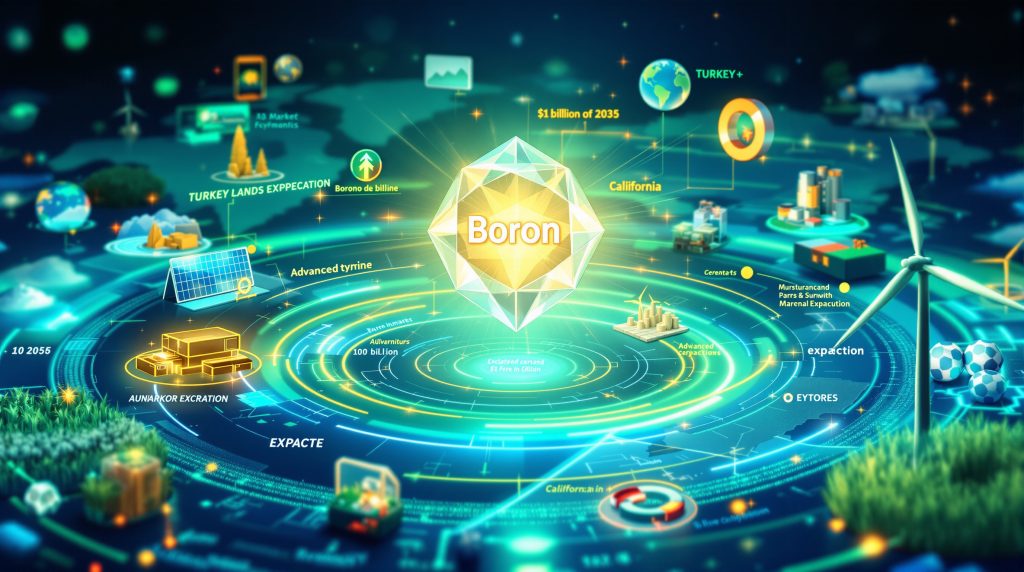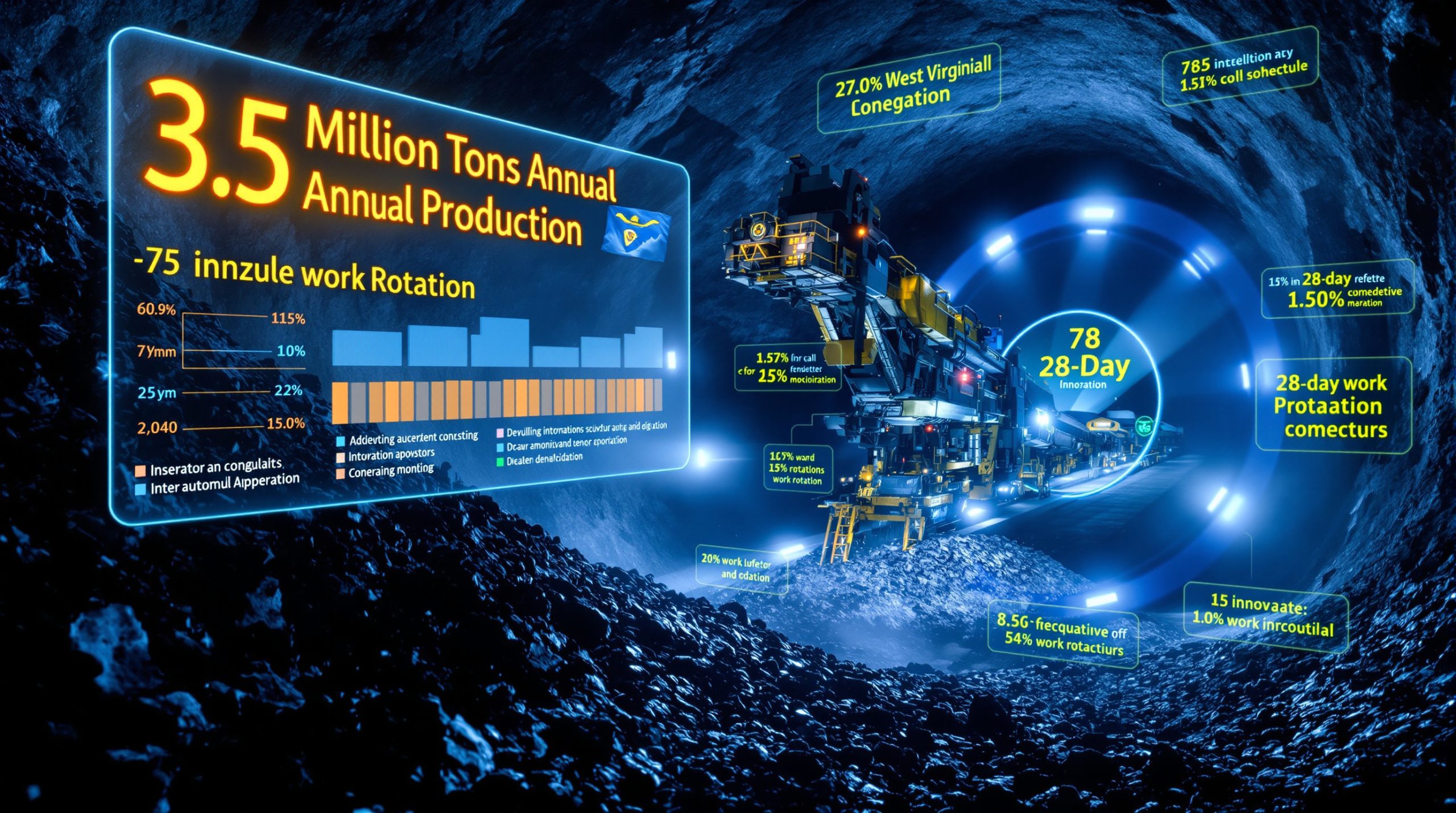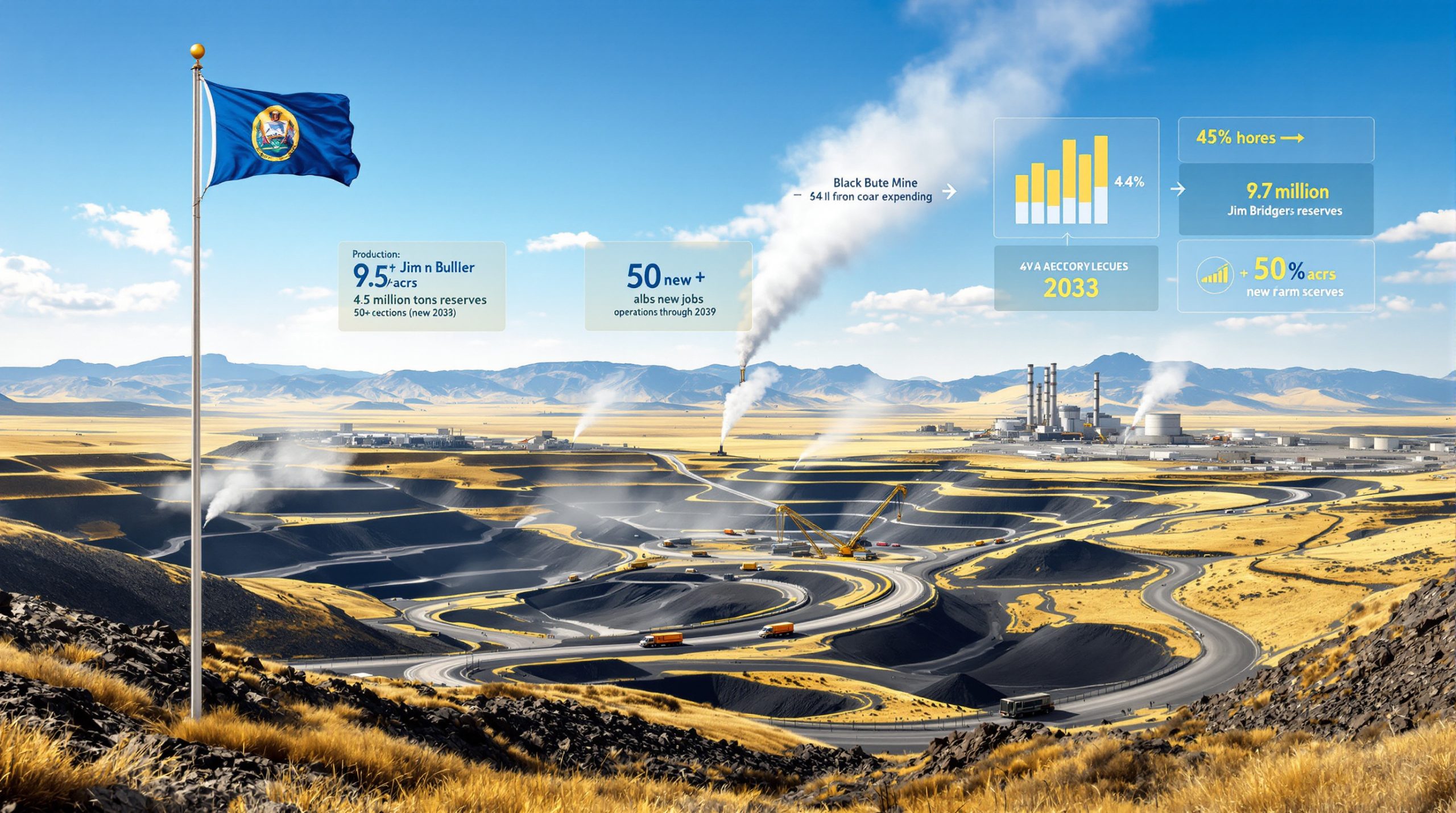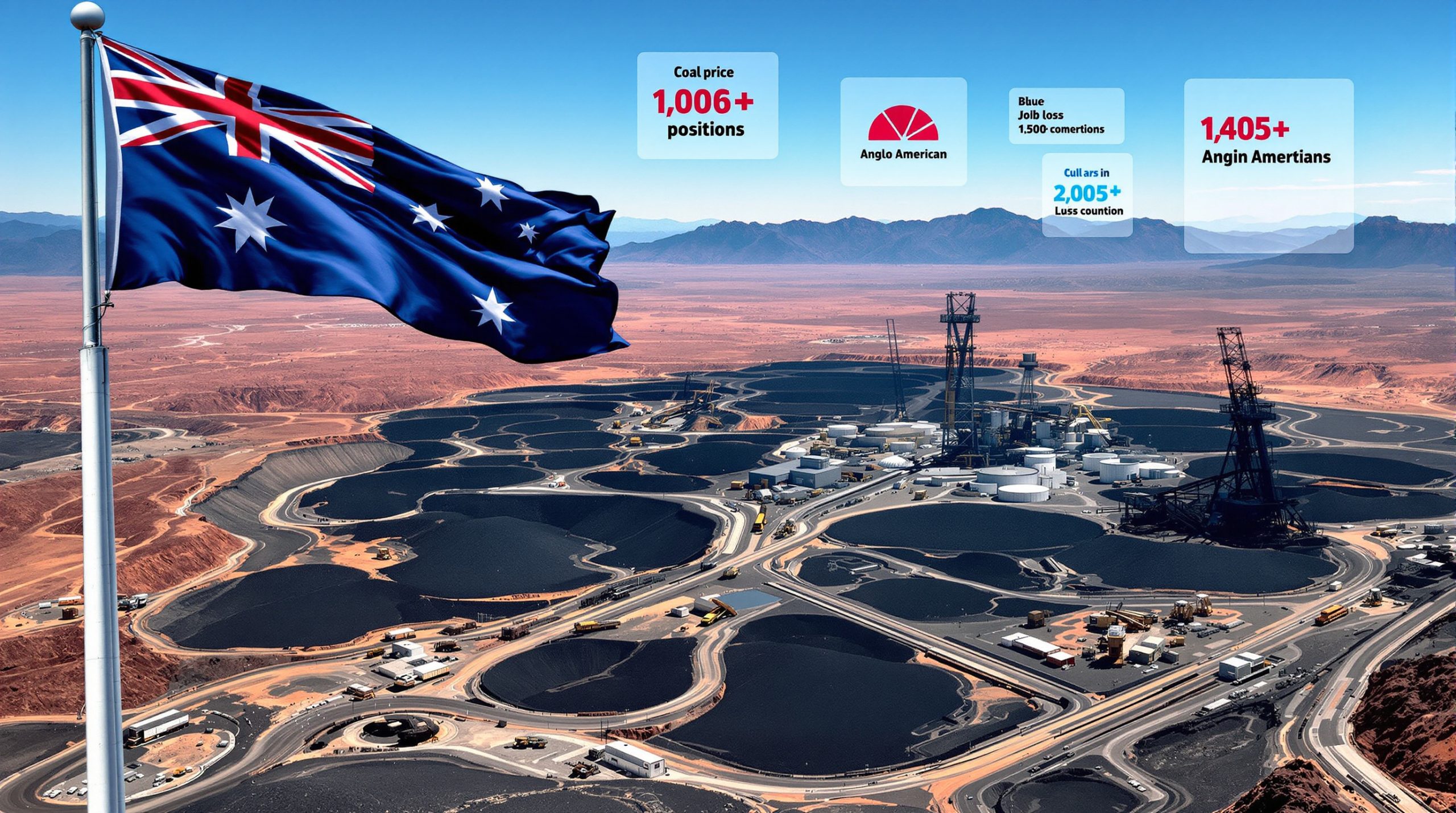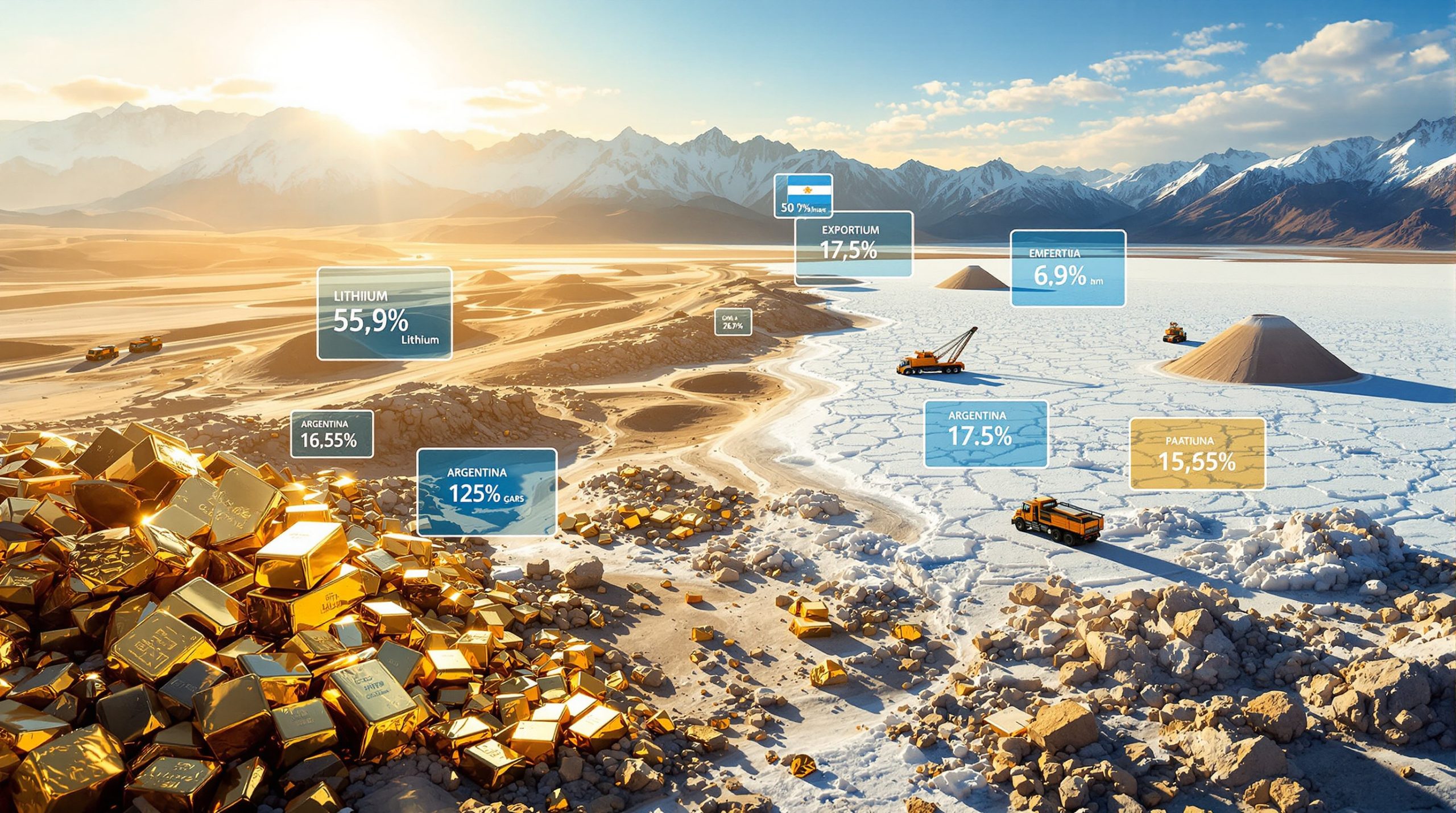Boron Market Dynamics: Supply, Demand, and Future Growth Trends
Despite not dominating headlines like lithium or copper, boron plays a crucial role in the global economy as the fifth element on the periodic table. With unique properties including heat resistance, light weight, energy density, and antimicrobial capabilities, boron serves as an essential ingredient in over 300 different applications that impact our daily lives.
This versatile element strengthens glass displays in smartphones, reinforces fiberglass insulation in homes, and finds its way into countless manufacturing processes. Its significance extends beyond conventional uses into high-tech applications like advanced ceramics, permanent magnets for electric vehicles, and even military-grade armor.
The Multifaceted Applications of Boron
Boron possesses a remarkable combination of chemical properties that make it indispensable across numerous industries. Its heat resistance, light weight, and energy density create unique advantages that few other elements can match.
The mineral's versatility is exemplified by its presence in materials ranging from everyday household items to advanced defense applications. As Paul Wilby, CEO of 5E Advanced Materials, notes, "If Tony Stark were to build an Iron Man suit, it's actually a boron-based suit," highlighting boron's underappreciated importance.
Boron's Critical Role in Advanced Materials
Boron's contribution to advanced materials is particularly significant:
- Boron carbide – The third hardest material on Earth, used in kevlar and tank armor
- Neodymium-iron-boron (NdFeB) magnets – Contain 1.5-2% boron but are essential for electric vehicles and wind turbines
- Amorphous boron – Utilized in smokeless rockets and specialized military applications
- Boron nitride – Critical for semiconductor applications and electronics
What's Driving Global Boron Demand?
The global boron market demonstrates robust growth between 5-6% annually—outpacing global GDP growth and creating sustained demand pressure across multiple sectors. This growth stems from both traditional applications and emerging technologies requiring boron's unique properties.
Traditional Applications Maintaining Steady Growth
The boron market can be segmented into several major application categories, each with distinct growth trajectories:
- Non-glass applications: Growing at 4.5-5% annually, including ceramics, fertilizers, and construction materials
- Glass applications: Expanding at 3.5-4% yearly, covering LCD screens, Pyrex, and specialty glass products
- Specialty applications: Accelerating at approximately 8% annually, encompassing high-tech uses in magnets, semiconductors, and defense
This diversification across industries creates what industry experts describe as "an insulator to low growth." When some sectors experience downturns, others often compensate, creating relatively stable overall demand growth.
Geographic Demand Centers
The Asia-Pacific region dominates global boron consumption, with China alone representing approximately 71% of the region's usage. This concentration stems from Asia's manufacturing prowess across electronics, automotive, construction, and agricultural sectors.
India's rapid industrialization is creating another significant demand center, while traditional markets in North America and Europe maintain stable consumption patterns despite higher operational costs and stricter environmental regulations.
Emerging Applications Accelerating Demand
Several high-growth sectors are intensifying boron demand:
Clean Energy Transition
Boron plays a crucial role in renewable energy technologies:
- Solar panels: Boron-doped silicon enhances photovoltaic efficiency
- Wind turbines: Neodymium-iron-boron (NdFeB) permanent magnets contain boron as a critical component
- Energy storage: Advanced battery technologies incorporate boron compounds for improved performance
Advanced Materials
The quest for stronger, lighter materials drives boron adoption:
- Boron carbide: Used extensively in tank armor and bulletproof vests
- Boron nitride: Critical for semiconductor applications
- Amorphous boron: Utilized in smokeless rockets and specialized defense applications
Agricultural Intensification
As global food security concerns mount, boron's role as a micronutrient in fertilizers becomes increasingly important. Boron deficiency in soils affects crop yields worldwide, making agricultural applications a steady growth driver.
What Characterizes the Global Boron Supply Landscape?
The global boron market exhibits classic oligopoly characteristics, with concentrated production control and limited competition, creating significant implications for pricing and availability.
Concentrated Production Control
Two dominant suppliers control approximately 85% of global production:
- Eti Maden (Turkey's state-owned enterprise): ~65% of global supply
- Rio Tinto's U.S. Borax (California operations): ~20% of global supply
This concentration creates significant market power for these producers, with limited competition and high barriers to entry for new market participants. Recent developments have further complicated this dynamic, with Rio Tinto announcing their boron operations were "up for strategic review," potentially signaling shifts in this tightly controlled market.
Geographic Supply Distribution
Global boron reserves are highly concentrated:
- Turkey: Holds more than one-third of global boron resources, primarily in the form of tincal and colemanite
- United States: Significant deposits in California, with the Fort Cady colemanite deposit representing one of the few remaining undeveloped resources
- South America: Chile and Argentina host important reserves, though at smaller scales
- Russia and China: Maintain meaningful but limited production capacity
Supply Constraints and Expansion Challenges
Several factors limit boron supply expansion:
- Geological scarcity: High-grade, economically viable boron deposits are rare
- Long development timelines: New projects typically require 10-15 years from exploration to production
- Permitting challenges: Particularly in developed economies with stringent environmental regulations
- Capital intensity: Mining and processing facilities require substantial investment
Mining Technology and Processing Methods
The extraction and processing of boron varies significantly based on deposit type and location. The Fort Cady project in California, for example, employs an in‑situ leaching benefits:
- Injection of diluted hydrochloric acid (95% water, 5% HCl) at 150-160°F into the deposit
- Solution comes into contact with colemanite (calcium borate mineral)
- Recovery of boron-rich solution from underground
- Above-ground processing using aqueous chemistry
- Regeneration of hydrochloric acid through a closed-loop recycled mining process
This approach differs substantially from more traditional open-pit mining methods used in some other deposits, highlighting the technical complexity involved in boron production.
How Are Market Prices Responding to Supply-Demand Dynamics?
The global boron market demonstrates interesting pricing patterns influenced by its oligopolistic structure and diverse application portfolio.
Current Market Valuations
The global boron market demand and supply dynamics reflect varying estimates based on measurement methodology:
- Conservative estimates: Approximately $3.5-4 billion (focused on pure boron chemicals)
- Comprehensive estimates: $12-13.5 billion (including broader boron minerals and derivatives)
By 2035, projections suggest the market could reach $18-19 billion, reflecting steady growth across multiple applications.
Price Stability and Regional Variations
Boron prices demonstrate relative stability compared to more volatile commodities like lithium or cobalt. This stability stems from:
- Diversified end-use applications: Reducing vulnerability to sector-specific downturns
- Controlled supply expansion: Major producers carefully manage production increases
- Long-term contracts: Many industrial users secure supply through multi-year agreements
Regional price variations exist, with North American prices typically commanding premiums over Turkish material due to quality differentials and logistics advantages for certain markets.
Market Tightness Indicators
Recent market behaviors indicate growing supply constraints:
- Major suppliers exiting certain regional markets (including India and Vietnam)
- Customers actively seeking supply diversification
- Limited new production capacity coming online
Industry experts warn that without significant new supply sources, market tightness could intensify if demand continues its current growth trajectory.
How Are Geopolitical Factors Influencing the Boron Market?
The global boron market is increasingly affected by geopolitical considerations, including trade policies, tariffs, and strategic mineral designations.
Trade Policies and Tariffs
Recent shifts in global trade policies have created market disruptions:
- Tariff impacts: U.S.-originated tariffs and reciprocal measures from trading partners have altered traditional supply routes
- Market segmentation: Some suppliers have strategically exited certain regional markets to focus on higher-margin opportunities
- Supply tightening: Reduced cross-border flows have created localized shortages in some regions
An industry insider revealed that Turkish producers have "elected to not supply the United States but then send their boats over to Asia" to capture higher margins, leaving some U.S. warehouses unfilled and creating supply pressure.
Critical Mineral Designations
Boron's strategic importance has gained recognition:
- European Union: Designated boron as a critical mineral with plans for an European CRM facility
- United Kingdom: Included boron on its critical minerals list
- United States: Department of Defense recognizes boron's strategic importance, though it remains absent from the USGS critical minerals list
These designations influence policy support, financing availability, and strategic stockpiling decisions. The lack of alignment between different U.S. government departments (DoD vs. USGS) regarding boron's critical status creates challenges for domestic producers seeking government-backed financing.
Supply Chain Security Concerns
Defense applications highlight the strategic importance of secure boron supply chains:
- Approximately 85% of global boron carbide is currently manufactured in China
- Current supply chain vulnerabilities include Turkish boron being processed into boron carbide in China, then purchased by the U.S. government for defense critical materials
- Efforts to establish domestic supply chains from mine to finished product are underway, with DoD funding supporting some initiatives
What Does the Future Hold for Boron Markets?
The intersection of limited supply expansion and growing demand creates an intriguing outlook for boron market demand and supply dynamics in the coming decades.
Supply Expansion Outlook
Several factors will shape future supply:
- Resource depletion concerns: Some existing operations face declining reserves and grades
- New project development: Projects like Fort Cady in California represent potential new supply sources, though with extended development timelines
- Processing innovations: Technologies enabling lower-grade resource utilization could expand economically viable reserves
Industry experts note that only five sizable boron deposits have been identified globally, creating a fundamental constraint on future supply expansion.
Demand Growth Projections
Demand is expected to continue its robust growth trajectory:
- Traditional applications: Steady 3-5% growth in established uses
- Emerging technologies: Potential acceleration in high-tech applications, particularly in clean energy and advanced materials
- Geographic expansion: Growing consumption in developing economies as industrialization advances
Market Balance Considerations
The interplay between supply constraints and demand growth creates potential market tightness:
- Short-term (1-3 years): Relatively balanced market with localized tightness
- Medium-term (3-7 years): Increasing supply pressure as demand growth outpaces capacity additions
- Long-term (7+ years): Significant supply expansion needed to avoid structural shortages
"Either the world needs to discover more boron deposits or all five of them need to come online at their max capacity. Otherwise this is a market that continues to get very tight and will disrupt industry if growth continues as we foresee."
How Can Investors and Stakeholders Position for Boron Market Evolution?
The unique characteristics of the boron market create specific considerations for investors, industrial users, and policy stakeholders.
Investment Considerations
For those looking at boron market exposure:
- Vertical integration opportunities: Companies controlling both resources and downstream processing capabilities may capture additional margin
- Specialty product focus: Higher-value derivatives typically offer better returns than commodity-grade materials
- Geographic diversification: Operations with access to multiple markets provide flexibility as trade patterns evolve
Companies developing new boron resources often pursue a multi-faceted financing approach:
- Government-backed agency debt (lowest cost but slower processing)
- Traditional mining project finance from commercial banks
- Private capital (fastest but most expensive)
- Customer prepayments for long-term supply contracts
- Royalty financing from mining-focused funds
- Traditional equity raises
Strategic Implications for Industry
For industrial users and policy stakeholders:
- Supply security strategies: Long-term contracts, strategic partnerships, and inventory management become increasingly important
- Substitution research: Where possible, exploring alternatives reduces vulnerability to supply constraints
- Recycling development: Currently limited, but potentially significant future opportunity
Reshoring and Supply Chain Development
The strategic importance of boron in critical applications is driving efforts to establish complete domestic supply chains, particularly in the United States:
- Partnerships between upstream producers and downstream manufacturers
- Government funding for critical mineral processing capabilities
- Focus on defense and clean energy applications as priority sectors
The Strategic Importance of Boron in a Changing World
Boron's role in both traditional industries and emerging technologies ensures its continued strategic relevance in a rapidly evolving global economy.
Boron's Role in National Security
The defense applications of boron make it a matter of national security for many countries:
- Armor and protective materials: Boron carbide for personal and vehicle protection
- Aerospace applications: High-performance materials for aviation and space
- Emerging defense technologies: Advanced materials for next-generation systems
Enabling the Energy Transition
Boron's properties make it essential for several clean energy technologies:
- Improved energy efficiency: Boron-containing insulation and materials
- Renewable energy components: Critical for wind and solar technologies
- Advanced nuclear applications: Boron's neutron-absorbing properties
The growing emphasis on Australia critical minerals demonstrates how countries are positioning themselves in the critical mineral space, including boron resources for the energy transition.
Supporting Advanced Manufacturing
As manufacturing advances toward more sophisticated materials and processes, boron's importance grows:
- High-performance electronics: Semiconductor and display technologies
- Advanced ceramics: Heat-resistant and lightweight materials
- Specialized glass products: Technical and optical applications
The acceleration of mining industry trends 2025 will likely continue to reshape how boron and other critical materials are sourced and processed globally.
Conclusion
The boron market presents a fascinating case study in resource economics—combining geological scarcity, concentrated production, diverse applications, and growing strategic importance. While less visible than many other commodities, boron's fundamental role in countless essential products ensures its continued significance.
As global manufacturing evolves, particularly with the acceleration of clean energy technologies and advanced materials, boron's market dynamics will likely intensify. The oligopolistic supply structure, combined with growing demand across multiple sectors, creates conditions for potential market tightness if significant new production capacity isn't developed.
For industry participants, investors, and policy makers, understanding these unique supply-demand dynamics provides valuable insights into this critical but often overlooked element's market future.
Disclaimer
The projections and market analyses presented in this article are based on current information and trends. Market conditions can change rapidly due to technological developments, policy shifts, or unforeseen global events. Investors should conduct their own due diligence before making investment decisions based on the information presented.
Further Resources
Readers interested in learning more about boron market dynamics can explore related educational content, such as the Dig Deep Mining Podcast episode "Boron Market Demand and Supply Dynamics." This podcast offers additional perspectives on the boron industry from market participants.
For those considering investment in the sector, consulting with financial advisors who specialize in commodity markets and critical minerals is recommended to understand the specific risks and opportunities presented by this unique market.
Ready to Capitalise on the Next Major Mineral Discovery?
Stay ahead of the market with Discovery Alert's proprietary Discovery IQ model that instantly identifies significant mineral discoveries on the ASX and translates complex data into actionable investment opportunities. Visit our discoveries page to explore historic examples of exceptional returns from major mineral discoveries and begin your 30-day free trial today.
